Definition, Formula, Solved Example Problems, Exercise | Algebra | Mathematics - Quadratic Functions | 11th Mathematics : UNIT 2 : Basic Algebra
Chapter: 11th Mathematics : UNIT 2 : Basic Algebra
Quadratic Functions
Quadratic Functions
In earlier classes we
have learnt that for any z ∈ R and n ∈ N, zn = z · z · z · · · z (n-times).
A function of the form
P (x) = ax2 + bx + c, where a, b, c ∈ R are constants and a ¹
0, is called a quadratic function. If P (t) = 0 for some t ∈ R, then we say t is a zero of P (x).
1. Quadratic Formula
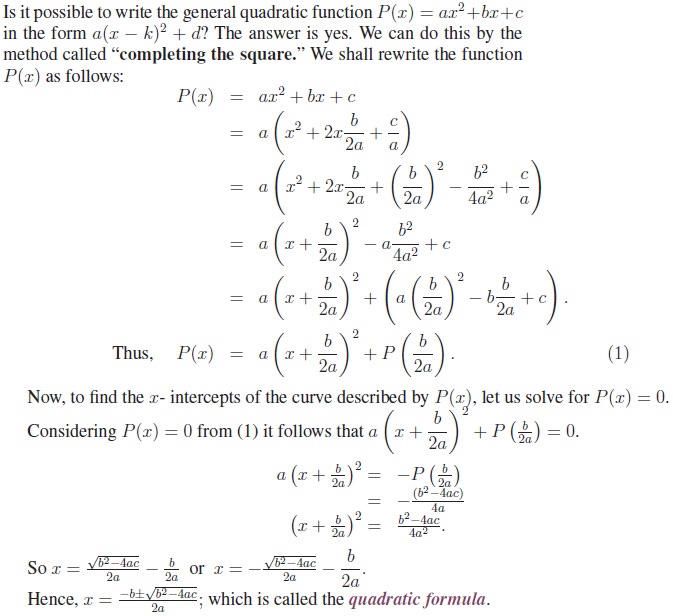
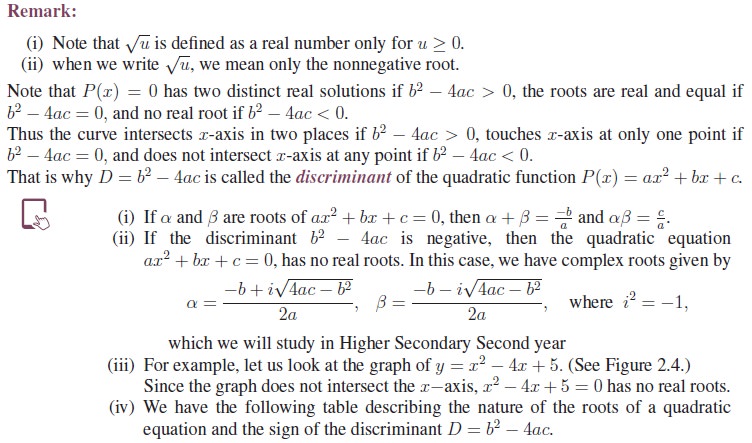
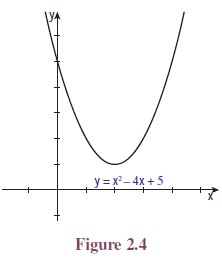

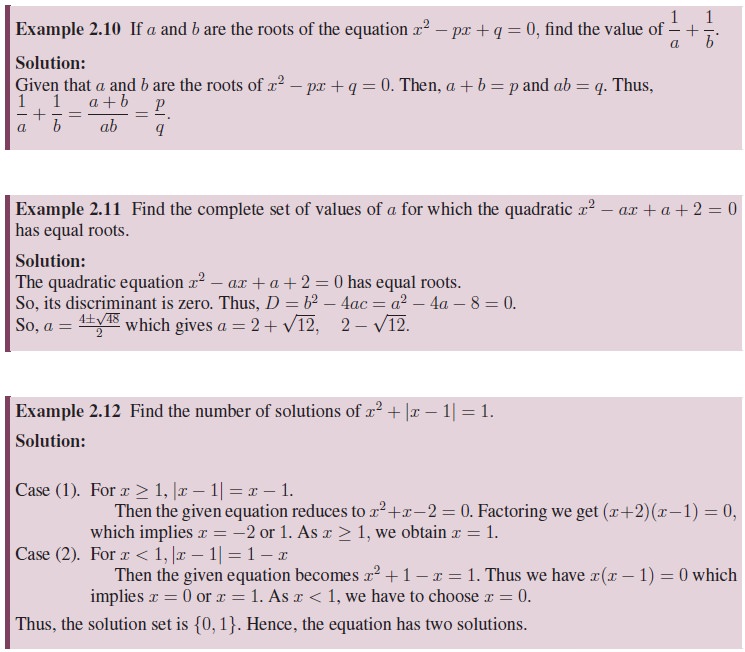
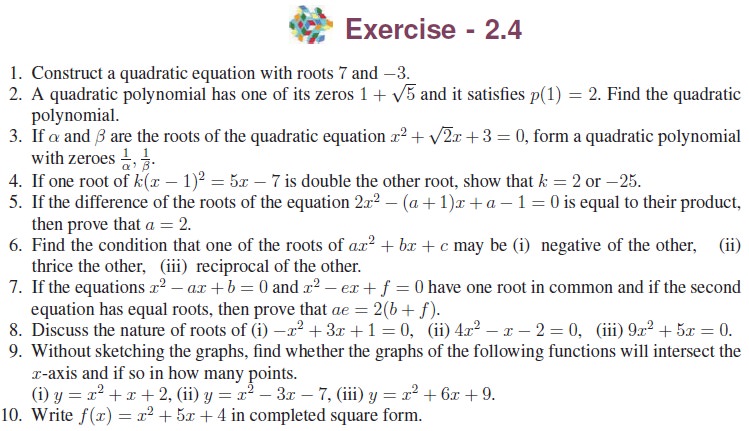
2. Quadratic Inequalities
Here we shall learn to
solve the quadratic inequalities ax2 + bx + c < 0 or ax2 + bx + c > 0.
Steps to Solve
Quadratic Inequalities:
i.
First solve ax2 + bx + c = 0.
ii.
If there are no real solutions, then one of the above inequality
holds for all x ∈ R
iii.
If there are real solutions, which are called critical points, then label those points
on the number line.
iv.
Note that these critical points divide the number line into
disjoint intervals. (It is possible that there may be only one critical point.)
v.
Choose one representative number from each interval.
vi.
Substitute that these representative numbers in the inequality.
vii.
Identify the intervals where the inequality is satisfied.

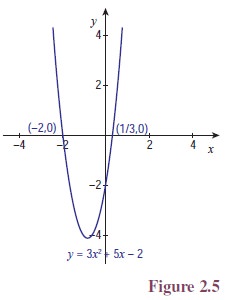

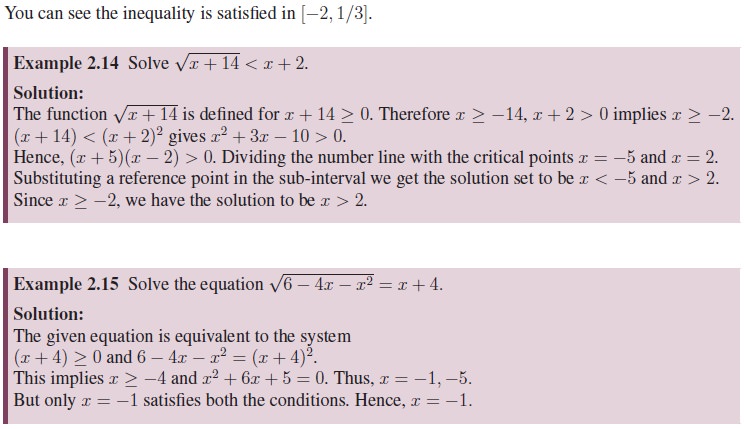
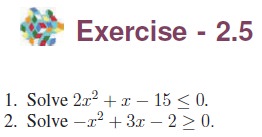
Related Topics